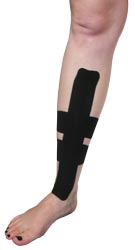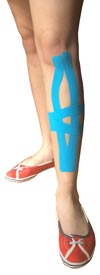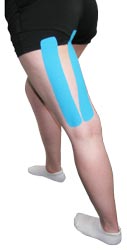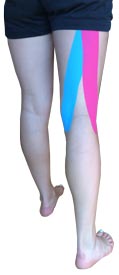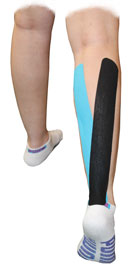Taping the Leg
- Taping Applications for Shin Splints -- How to Tape Your Legs if You Have Shin Splints
- Quad Muscle Taping Applications -- Instructions on How to Apply Tape for a Quad Injury
- Hamstring Muscle Taping Applications -- Step-By-Step Guidance on Taping Your Hamstrings
- How to Tape the Calf Muscles -- Two Kinesiology Taping Applications for Calf Muscle Injuries
If you are experiencing leg pain or a leg injury, taping the affected area can provide you with much needed relief. Whether you have Shin Splints, a Calf Muscle Tear, a Quad Muscle Strain or a Hamstring Injury, tape can give your soft tissue the support and protection it needs.
Since tape works to limit your range of motion, this helps to prevent injury as well as re-injury. Make applying tape to your problem areas a new part of your pre-game or pre-workout preparation. Tape is especially effective during times when you’re being physically active.
It makes your skin and tissue more rigid and less elastic, but it is still soft, light and comfortable to wear. Tape also provides you with compression while you wear it, which helps to relieve swelling.

